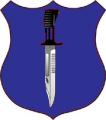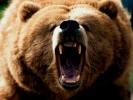I looked a bit around and found this concerning optics, weapons etc. This is of course about snipers in WWII, and rather good ones at that, but I think it is telling about the challenges of accurate rifle fire under "difficult" situations.
Originally Posted by Wiki
Widhofner questioned three seasoned snipers individually. They are designated in the order A, B and C. All three were members of the Third Mountain Division of the former German Army. With respect to their person please note the following:
A. Matthäus Hetzenauer of Tyrol fought at the Eastern Front from 1943 to the end of the war, and with 345 certified hits is the most successful German sniper.
B. Sepp Allerberg of Salzburg fought at the Eastern Front from December 1942, to the end of the war, and with 257 certified hits is the second-best German sniper.
C. Helmut Wirnsberger of Styria fought at the Eastern Front from September 1942, to the end of the war and scored 64 certified hits (after being wounded he served for some time as instructor on a sniper training course).1. Weapons used?
A. K98 with six-power telescopic sights. G43 with four-power telescopic sights.
B. Captured Russian sniper rifle with telescopic sight; I cannot remember power. K98 with six-power telescopic sights.
C. K98 with 1.5-power sights. K98 with four-power telescopic sights. G43 with four-power telescopic sights.
2. Telescopic sights used?
A. Four-power telescopic sight was sufficient up to a range of approximately 400 meters, Six-power telescopic sight was good up to 1,000 meters.
B. Used for two years a captured Russian rifle with telescopic sight; yielded good results, Six-power telescopic sight mounted on K98 was good.
C. 1.5-power telescopic sight was not sufficient; four-power telescopic sight was sufficient and proved good.
3. What is your opinion on increasing the magnification of your telescopic sights?
A. & B. Six-power was sufficient. There was no need for stronger scope. No experience with greater magnification.
C. Four-power is sufficient in both cases.
4. At what range could you hit the following targets without fail?
A. Head up to 400 meters. Breast up to 600 meters. Standing Man up to 700-800 meters.
B. Head up to 400 meters. Breast up to 400 meters. Standing up to 600 meters.
C. Head up to 400 meters. Breast up to 400 meters. Standing Man up to 600 meters.
5. Do the ranges indicated by you apply only to you, i.e. the best snipers, or also to the majority of snipers?
A. & B. Only to the best snipers.
C. To me personally as well as to the majority of snipers. A few outstanding snipers could hit also at longer ranges.
B added: Absolutely positive hitting is possible only up to about 600 meters.
6. What was the range of the furthest target you ever fired at, and what kind of target, size?
A. About 1,000 meters. Standing soldier. Positive hitting not possible, but necessary under the circumstances in order to show enemy that he is not safe even at that distance! Or superior wanted to satisfy himself about capability.
B. 400 to 700 meters.
C. About 600 meters, rarely more. I usually waited until target approached further for better chance of hitting. Also confirmation of successful hit was easier. Used G43 only to about 500 meters because of poor ballistics.
7. How many second shots / Additional shots were necessary per ten hits?
A. Almost never.
B. One to two. Second shot is very dangerous when enemy snipers are in the area.
C. One to two at the most.
The percentage under "realistic" circumstances in a Great war. See also question 4.
13. Percentage of successful hits at various ranges?
Up to 400 meters A. 65 percent C. 80 percent
Up to 600 meters A. 30 percent C. 20 percent
Additional information: A. This is why about 65 percent of my successful hits were made below 400 meters.
B. Do not remember. Mass of hits were below the range of 600 meters.
C. Shot mainly within range of 400 meters due to great possibility of successful hit. Beyond this limit hits could not be confirmed without difficulty.
14. Do these percentages and ranges apply to you personally or are they valid for the majority of snipers?
A. This information is applicable to the majority of snipers as well as to the beat snipers, for: the majority of snipers could hit with absolute certainty only within a range of 400 meters due to their limited skills, the best snipers could hit with reasonable certainty at longer ranges; they in most cases, however, waited until enemy was closer or approaching the enemy in order to better choose the target with respect to its merit
More about optics and their importance:
19. Was it advisable to equip the sniper with a double telescope (binos)? What magnification did the double telescope have?
A. 6 x 30 enlargement was insufficient for longer distances. Later I had a 10 x 50 telescope which was satisfactory.
B. Double telescope was equally important as rifle. No further information.
C. Every sniper was equipped with a double telescope. This was useful and necessary. An enlargement of 6 x 30 was sufficient up to a range of about 500 meters.
20. Would you prefer a periscope which allows observation under full cover?
A. Was very useful as supplement (Russian trench telescope).
B. No.
C. Was used when captured.
21. Were scissor stereo telescopes (positional warfare) used?
A, C. Yes, when available. Was used mutually by sniper and artillery observer.
B. No.
Wind and moving targets.
27. How did you overcome side wind?
A. By my own judgment and experience. When necessary, I used tracer ammunition to determine wind drift. I was well prepared for side wind by my training at Seetaleralpe where we practiced often in strong winds.
B. By own judgment. We did not shoot when side wind was too heavy.
C. No explanation since snipers do not shoot with strong winds.
28. Can you recall the rules pertaining to your behavior when shooting at moving targets?
A, B, C: No; importance is own judgment and experience as well as fast aiming and fast firing.
TO&E and "designated marksmen"
10. Were you incorporated into a troop unit?
All three belonged to the sniper group of the battalion. C was the commander of this group. They numbered up to 22 men; six of them usually stayed with battalion, the rest were assigned to the companies. Observations and use of ammunition as well as successful hits had to be reported daily to the battalion staff. In the beginning, the snipers were called up cut of the battalion, as the war continued and the number of highly-skilled snipers decreased, they were often assigned and given their orders by the division. In addition, a few marksmen in each company were equipped with telescopic sights. These men did not have special training but were able to hit accurately up to about 400 meters and carried out a great deal of the work to be done by "actual snipers". These specially equipped riflemen served in the company as regular soldiers. This is why they could not achieve such high scores as the "snipers".
Recruitment:
17. From what group of persons were snipers selected?
A. Only people born for individual fighting such as hunters, even poachers, forest rangers, etc without taking into consideration their time of service.
B. Do not remember. I had scored 27 successful hits with Russian sniper rifle before I was ordered to participate in sniper training course.
C. Only soldiers with experience at the front who were excellent riflemen; usually after second year of service; had to comply with various shooting requirements to be accepted in the sniper training courses.
To be continued...
Firn








 Anyone would have more luck moving that argument than the 30-06 v .223
Anyone would have more luck moving that argument than the 30-06 v .223






 - actually train them properly. A well trained Soldier with an M4 isn't going to have any problems hitting his target. But if the ammo goes through the enemy's body like a needle, then just hitting the enemy isn't going to be sufficient. You're going to need to put every round directly in the pelvis, knee cap, CT region, or head. That's not always feasible. It's tough to "aim small, miss small" if crazy Akmed is sprinting through a marketplace.
- actually train them properly. A well trained Soldier with an M4 isn't going to have any problems hitting his target. But if the ammo goes through the enemy's body like a needle, then just hitting the enemy isn't going to be sufficient. You're going to need to put every round directly in the pelvis, knee cap, CT region, or head. That's not always feasible. It's tough to "aim small, miss small" if crazy Akmed is sprinting through a marketplace. 


Bookmarks